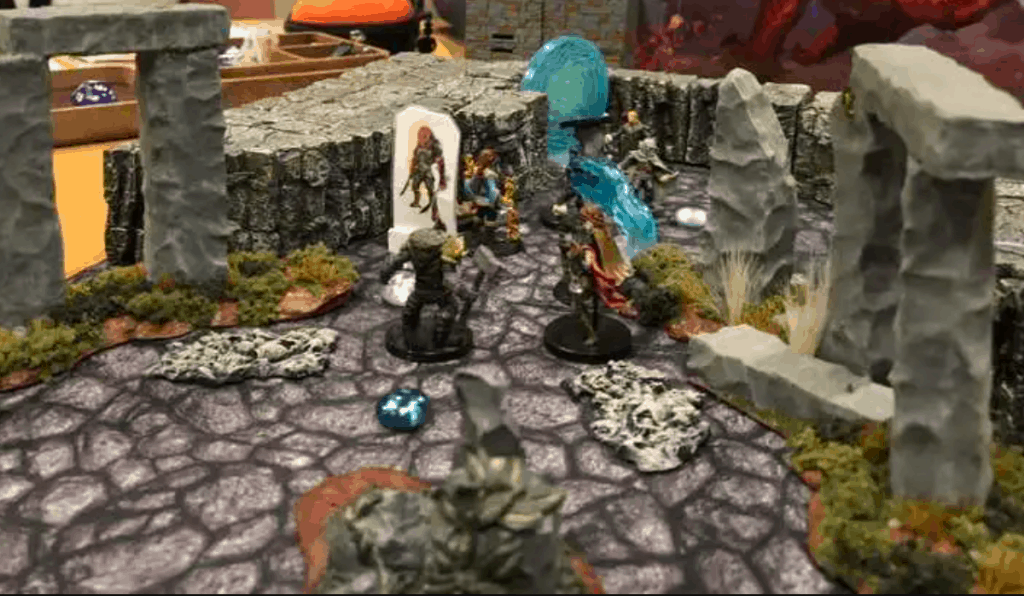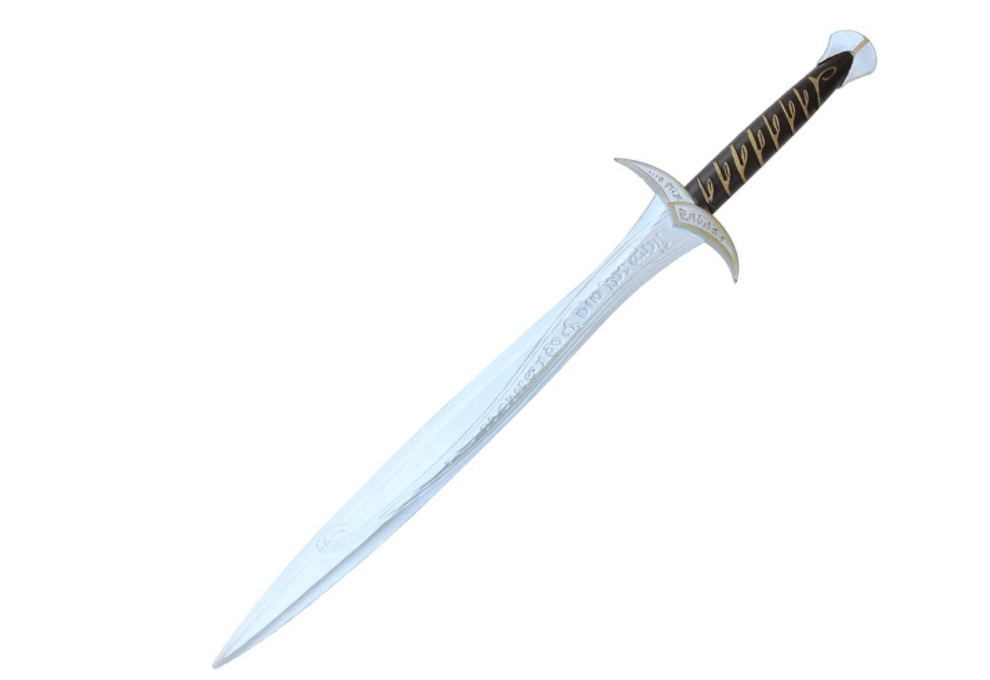Your party is too late, the evil cultists have summoned their demon overlord, and your party of adventurers is outmatched. Your weapons are useless, the powerful spells of your mages and warlocks don’t work, and the demon is charging up an attack that you are sure will wipe out everyone nearby. There’s nothing else you can do before your magic-user raises a hand and brandishes their holy symbol.
Perhaps one of the only spells that can save an adventuring party from sudden demonic attacks, elemental incursions, or other attacks from creatures not of this world, banishment can be a lifesaver if you know how to use it correctly. But this spell isn’t as simple as it seems, and can even be dangerous if you don’t cast the spell correctly. So how do you use the banishment spell to save your party’s life rather than bring the adventure to an end? Here’s our Banishment 5e Guide to this spell in D&D!
What Is The Banishment Spell?
Here are the stats for the banishment spell, as stated in the player’s handbook:
- 4 level abjuration
- Casting Time: 1 action
- Range: 60 feet
- Components: V S M (An item distasteful to the target)
- Duration: Concentration, Up to 1 minute
- Classes: Paladin, Cleric, Sorcerer, Warlock, Wizard
You attempt to send one creature that you can see within range to another plane of existence. The target must succeed on a Charisma saving throw or be banished. If the target is native to the plane of existence you’re on, you banish the target to a harmless demiplane. While there, the target is incapacitated.
The target remains there until the spell ends, at which point the target reappears in the space it left or in the nearest unoccupied space if that space is occupied.
If the target is native to a different plane of existence than the one you’re on, the target is banished with a faint popping noise, returning to its home plane. If the spell ends before 1 minute has passed, the target reappears in the space it left or in the nearest unoccupied space if that space is occupied. Otherwise, the target doesn’t return.
At Higher Levels: When you cast this spell using a spell slot of 5th level or higher, you can target one additional creature for each slot level above 4th.
Alright, there’s a lot to break down here, so let’s get started. First, it cost one action to cast and has a range of 60 feet. It requires a verbal, somatic, and material component, and lasts for up to one minute with concentration. A Paladin, Cleric, Sorcerer, Warlock, or Wizard can cast the spell, and the spell effects are as follows.
You will try to send any creature you can see to another plane of existence, often their home plane. The target needs to pass a charisma saving throw or they are banished. If the creature is from the normal plane of existence they are sent to a harmless demiplane, incapacitated, and left there until the spell ends. Then they return exactly to the spot where they were when they were banished too, or to the nearest available spot.
For demons and those that are on other planes of existence, the spell acts a bit differently. There is no saving throw and they simply vanish when hit with the spell, returning to their home plane. If the spell ends, due to concentration being broken or the spell being dropped, they will reappear in the space they left or the nearest unoccupied space. If the spell continues for one minute, the creature is banished and does not return.
It’s a pretty powerful spell, but just to make sure you understand how powerful it is, you need to know how planes work.
What Are Planes in D&D?

The concept of different planes of existence could be an article all their own, but for a beginner here’s a quick and dirty rundown. Basically, the world of Faerun and any other gaming world you create is in the Material Plane, and this plane is a lot like earth. Now, there’s an infinite number of realms in the material plane, but outside of this, there are other planes of existence, equally as infinite.
For example, there’s the Astral plane, a realm of thought and dream where you leave your physical body behind to travel to other realms. Elemental planes of earth, air, fire, and wind, and outer planes that host good creatures. There’s an infinite number of planes that can be created and explored, and most extra planar creatures come from one of these planes.
What Are Some Creatures That Can Be Banished?
First and foremost, all elementals are from their respective elemental plane. Whenever a caster casts the spell to summon a fire elemental, they don’t create it from anything, but instead, summon it from the plane of fire to our material world. This process can be reversed through banishing, where the elemental can be banished from our world, back to theirs.
Fiends are also from the abyss most of the time, or from lower planes of chaos. They are born of evil and are creatures like Marliths, Dretchs, Quazits, and Devils. Demons and Devils are all put under the umbrella of being fiends, so they can all be banished.
If the creature is not of this world, chances are you can banish it to its home during combat, which can give you an edge against the powerful creatures.
What If A Creature Is Of The Material Plane?

Now of course, when most party members think of banishment, they think of defying a demon or sending away a rampaging elemental… but what about banishing more mundane targets? Can you banish an Orc warlord that is giving the party trouble for a little bit?
Well, yes, but they will eventually return. They can fight against the banishment by succeeding on a charisma saving throw, but if they fail they are banished to a harmless demiplane. A demi-plane is one of the smaller planes of existence, and the target is incapacitated while they are there. After one minute, they will always reappear in the spot they vanished from.
A banishment spell might be good to give your party a breather, but do you really want to burn a 4th level spell slot on someone who is just going to come back again anyway? Or do you want to make sure that the enemy you banish says gone?
What Is The Best Material Component?
According to the spell’s description, to cast the spell you need An item distasteful to the target, but what does that mean? Well, for demons, devils, and fiends, they recoil in the presence of holy light, cold iron, and fire. In most cases, a holy symbol is enough of a focus to do the job, but if your character has a component pouch we can assume that they have something distasteful to a demon in there.
Turning to a description from the 3.5 edition of the player’s handbook, we find this text that can help: It includes things which the target hates, fears, or otherwise opposes; particularly things which it is vulnerable to (examples include weapons made from metal the creature is vulnerable to or elements it is vulnerable to); and especially certain individual rare items that this individual especially dislikes.
For elementals, you can look at what they are vulnerable to. For example, fire elementals hate water. Water elementals hate the cold. Earth elementals might be able to be warded off with smoke, and air elementals can be defeated with bits of earth or metal. Talk to your DM about elementals, and you both might find some cool suggestions.
For other creatures, look into what makes them tick and their backstories. Chances are that within the lore of monsters you will find things that they don’t like or are vulnerable to. Have some fun with it, but if you have a component pouch or a focus, you don’t need to worry too much about material components.
Items and Weapons Work Too

Most DM’s allow items and weapons to be used as the material component, especially against creatures from the material plane. For example, all orcs hate elves and elven weapons, so having something elvish on you will allow you to cast banish on that orc chief successfully. Dwarves and goblins have enmity towards one another, so using a goblin tooth could help you banish that dwarven guard coming after you.
Again, talk to your DM, and don’t be afraid to get creative whenever it comes to the material components. It makes the spell more fun!
Banishment 5e FAQ
Question: Can Certain Enemies Be Immune to Banishment?
Answer: Of course, banishment can be a bit overpowered if it is used too much. A common tactic is to banish the toughest looking enemy first, mop up whoever he came with over ten rounds of combat, then surround the spot where the enemy will appear and beat the tar out of the tough foe when they rematerialize.
While you can make certain powerful enemies immune to being banished, even if you give an in-story reason for this to be the case, it can feel a bit underhanded. So the best thing to do is have your monsters be smart about it all. Let’s say your paladin manages to send a demon lord back to its home dimension, and the lesser demons have seen this. Chances are they either know what banishment is or they know that the paladin did something to make their boss go away, so they will leap forward and start attacking the paladin.
Since the spell is concentration-based, after every hit they will need to make a Constitution saving throw to avoid having the spell dropped. They will fail a save eventually, so if the enemy keeps whaling on them, chances are the spell will be broken before the 1-minute mark. Now, you don’t want to punish your players for using the spell and have every single enemy attack them, but enough foes should charge towards the caster to have it be a challenge to keep the spell up.
Question: What If A Player Gets Banished?
Answer: The players aren’t the only ones who have access to this spell, as enemy spellcasters might be able to use it against you. If a player gets banished, then they are sent to a harmless demiplane and are incapacitated while there, returning after ten rounds. On the off chance they are playing an extra planar creature, then they are sent back to their home plane. It’s up to the rest of the party to break the spellcaster’s concentration to get them back!
Having enemies with the banishment spell can be a rarity, as there are a lot of other fourth level spells that would better take up the spell slot and can deal actual damage to a party besides simply banishing one member for a minute of combat. Still, if the party does encounter it, then they follow the same rules the monsters would.
Question: Do I Need To Understand My Enemy To Use Banishment?
Answer: Some DM’s will attempt to curb the use of banishment by having players need to understand what their enemy dislikes and fears, and then have that on their person when casting the spell. Others simply say that a component pouch contains the knick-knacks you would need to repel most enemies. It really is up to your DM and also how much you plan to use banishment during the campaign.
If you are using it sparingly when it makes sense to use, most DM’s will just assume you have the material components that you need. However, if you are using the spell a lot and banishing before every combat, they might become more strict on what you need to have on you when you banish your foes.
Plus, while banishment is cool, there’s a lot of other fourth level spells that can be used too, so try to branch out!
- DnD Demons Guide: What Are Demons in 5e? - September 18, 2021
- Detect Thoughts 5e Guide: When, Why and How to Use It - September 9, 2021
- The Ultimate DnD Toll the Dead 5e Guide - September 9, 2021

